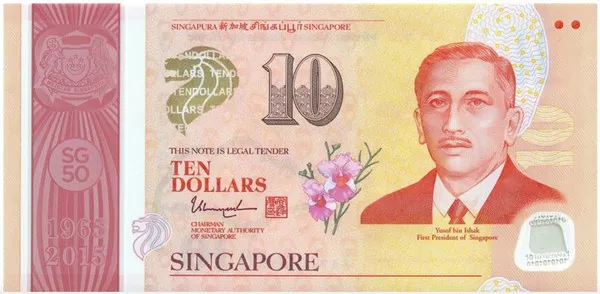The Singapore dollar, denoted by SGD, is the official currency of the Republic of Singapore. The Monetary Authority of Singapore (MAS) controls the issuance and circulation of the currency. Since 1967, when it was first introduced, the Singapore dollar has become a popular global currency for both personal and business transactions. This article explores the history, features, and significance of the Singapore dollar.
History of the Singapore Dollar
The history of the Singapore dollar can be traced back to 1845 when the Straits Settlements were established by the British East India Company. The Straits Settlements comprised Penang, Malacca, and Singapore, and served as an important trading post between Europe and Asia. The British pound was the official currency of the Straits Settlements until 1867 when the Indian rupee became the standard currency. In 1959, Singapore gained self-governance and started issuing its own banknotes and coins, which were pegged to the British pound.
In 1967, the Singapore dollar was introduced to replace the Malaysian ringgit, which was previously used in Singapore and Malaysia. The decision to introduce a new currency was made after Singapore’s separation from Malaysia in 1965. The newly introduced currency was initially pegged to the British pound, but it was later pegged to the US dollar in 1973. In 1985, the Singapore dollar was officially floated against other major currencies, allowing it to fluctuate freely based on market demand and supply.
Features of the Singapore Dollar
The Singapore dollar is divided into 100 cents and is available in both paper notes and coins. The denominations of the Singapore dollar include $2, $5, $10, $50, $100, $1,000 and $10,000. Coins come in denominations of 1 cent, 5 cents, 10 cents, 20 cents, and 50 cents. The banknotes and coins feature images of Singapore’s landmarks, iconic national symbols, and famous personalities.
The MAS closely monitors the supply of currency notes and coins, controlling their issuance to ensure efficient circulation while maintaining the value of the currency. The MAS has also implemented measures to prevent counterfeiting, such as incorporating advanced security features into the design of the notes and coins.
Significance of the Singapore Dollar
The Singapore dollar is widely recognized for its stability, thanks to the country’s strong economic fundamentals and prudent monetary policies. Singapore has a highly developed market economy that is driven by industries such as finance, technology, and logistics. The country’s strategic location at the crossroads of major shipping lanes in Asia has contributed significantly to its economic success.
Furthermore, Singapore is known for having a sound financial system that is well-regulated and transparent. The MAS is responsible for ensuring that banks and other financial institutions operate in a safe and sound manner, while also promoting competition and innovation in the financial sector. The strength of Singapore’s financial system, coupled with the country’s stable political climate, has made the Singapore dollar a popular currency for investors and businesses around the world.
Singapore dollar banknotes and coins
The Singapore dollar (SGD) is the official currency of the Republic of Singapore. It is managed and regulated by the Monetary Authority of Singapore (MAS). The Singapore dollar is divided into 100 cents, and it is available in both paper banknotes and coins. In this article, we will explore the design features and security measures of the Singapore dollar banknotes and coins.
Banknotes
The Singapore dollar banknotes come in denominations of $2, $5, $10, $50, $100, $1,000, and $10,000. The notes are made of polymer, a durable material that can withstand wear and tear better than traditional paper notes.
Each denomination of the banknote has a unique color theme and design. For example, the $2 note has a blue-green color theme, while the $50 note has a light blue color theme. The front of each note features a portrait of prominent Singaporeans, such as Yusof Ishak, who was the first President of Singapore, and Lee Kuan Yew, who was the country’s first Prime Minister.
The back of each note features images of Singapore’s landmarks and iconic symbols. For example, the $10 note features an image of the Esplanade – Theatres on the Bay, a popular performing arts center in Singapore, while the $50 note features an image of the Singapore Botanic Gardens, a UNESCO World Heritage site.
Coins
The Singapore dollar coins come in denominations of 1 cent, 5 cents, 10 cents, 20 cents, and 50 cents. The coins are made of nickel-plated steel or brass-plated steel, depending on the denomination.
Each coin has a unique design featuring Singapore’s national symbols and landmarks. For example, the 1-cent coin features an image of a Singaporean flower, the Vanda Miss Joaquim, while the 50-cent coin features an image of the Merlion, a mythical creature that is also a popular tourist attraction in Singapore.
Conclusion
The Singapore dollar is an important currency both regionally and globally. Its stability, reliability, and liquidity have made it a popular currency for individuals and businesses alike. The MAS has implemented measures to ensure that the currency remains secure and stable, while also promoting innovation in the financial sector. As Singapore continues to build upon its reputation as a global financial hub, the importance of the Singapore dollar is likely to grow even further.


